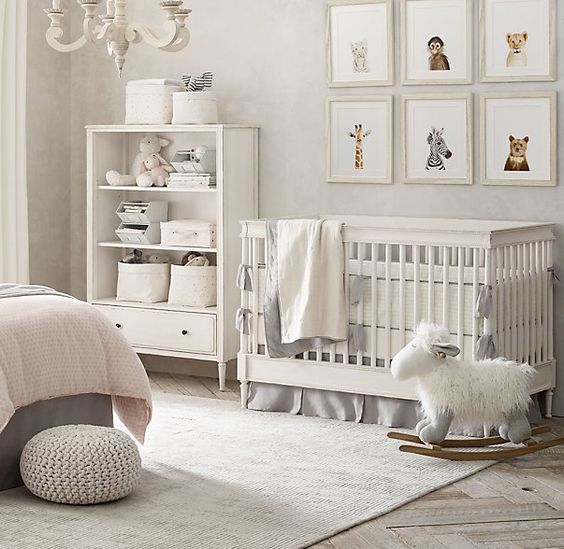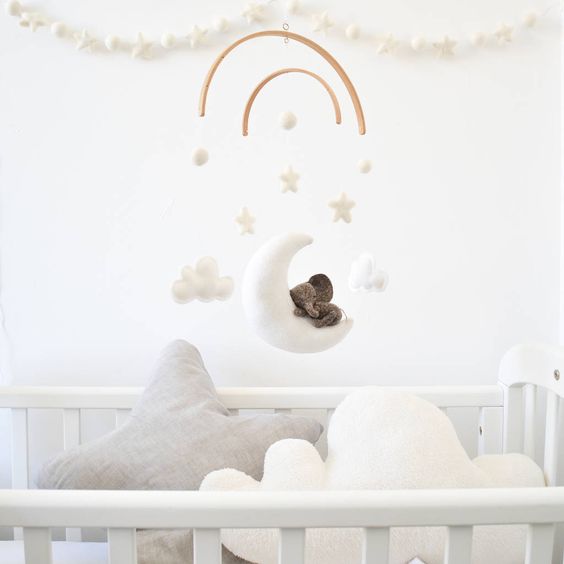
You’ve crushed advanced education and your career is moving right along, thanks to creative insight and measured prudence. List-making is knee-jerk and getting things done second-nature.
Perhaps you’ve already covered major baby-ready items like car seats, cribs and strollers — but you know intuitively it’s equally important to consider easily overlooked details. To that end, we’ve identified seven simple actions which, when taken in advance of baby’s arrival, allow for you to focus on the remarkable role of motherhood.

1. Create Space
Check out the storage areas of your home. Does your basement or attic contain items you don’t currently need — or may never need again? College paraphernalia, childhood collections, obsolete exercise equipment, long-forgotten project supplies — only you know which items may be worth saving. In your current hormonal state, you might want to consider enlisting the help of a trusted friend to sort through and categorize realistically. If you have plans to use this space long-term for storage, you may want to take this opportunity to look at St. Louis basement waterproofing to protect both your property and your belongings from water damage. It is highly recommended to hire a professional with years of experience in waterproofing services to eliminate water presence in your basement.
How about closets? Donate clothes, shoes and jackets you honestly will never wear again. Pack up formfitting outfits for a few months down the road. Don’t forget about your linens, either. Honestly, if you get laundry done at all when the baby first comes home, you will re-sheet immediately. Backup bed and bath items are easy to box. Perhaps you can stow them temporarily in the recently freed space of your attic or basement.
2. Overhaul Kitchen
Now that you’ve got the hang of clearing things out in general, it’s time to renegotiate kitchen flow. Look at what you have and where you have it with a critical eye. Do you need 16 coffee mugs on hand, or a full set of cookware stashed in cabinets below? Perhaps you can pare down to a few basic pots and pans for now. Temporarily remove specialty bakeware and crystal glasses to make room for necessary baby-feeding items.
3. Prepare Pets
A Harris poll states 95 percent of pet owners consider them part of the family. Pets thrive on routine, and let’s face it: Yours is about to change drastically. Try slowly changing things in advance. Cut play time down in small increments, and allow for a more changeable feeding schedule. Introduce baby sounds into the house with a recording. Cuddle together in the new nursery, so it becomes a familiar and comfortable place.
Set aside a blanket or clothing specifically meant to introduce the baby’s scent. Initially, rub it with lotion or powder. Once the baby is born, place the article in contact with your child, then bring it home for your pet’s initial olfactory introduction.
4. Landscape Wisely
Not to be underestimated is the power of window-viewed beauty and those precious snippets of fresh air you can step directly into from your door. Focus on shifting your property into low-maintenance and low-stress mode.
5. Stock Up
You will receive gifted and loaned baby supplies galore: diapers and clothing in several different sizes, infant lotions, shampoos — even tiny toiletries like nail cutters and nasal syringes. With all these supplies, you may feel prepared for anything and possibly a little overwhelmed. Don’t worry — try to go with the flow and gather ample household goods as well. Invest in a practical Pack and Play; allowing your child to sleep and play safely and making traveling much more convenient and less stressful too! Stock up on dishwashing soap, garbage bags, paper towels, cleaning supplies and your favourite hair conditioner. With your new baby habitually in one arm, it will be sweet indeed to have whatever may be needed right at your fingertips.
6. Block Out Light
Consider installing blackout blinds, at least in the nursery and your bedroom. Infant sleep schedules can be sketchy. It’s helpful to try and grab some rest when the baby sleeps, even if it’s in the middle of the day. Blackout curtains block light and noise, in effect simulating a healthy sleep environment at any time. An added element is one of efficient home energy conservation. Research different types available and see if one is right for you. Possibilities range from high-end to simple DIY options.
7. Lock Down
This step is often considered late, when baby begins to show signs of crawling and pulling to stand. Right now, however, you are probably feeling pretty physically awkward yourself. You can’t see your feet while standing and sometimes forget to negotiate your wider girth in tight spots. Do yourself and baby a favour by securing your home now.
Fasten down the ends of throw rugs and liners, bundle electric cords and rearrange dangling blind cords. Cover electrical sockets and install safety latches on drawers and cabinets. Consider bubble-wrapping or placing plastic guards over sharp-edged tables and countertops. It takes a while to normalize household function with added elements of safety latches and socket guards, but if you acclimate now, baby’s arrival will be less fraught with the necessity to accommodate new behaviors.
By preparing for your new family member with diligence and vision, you have ultimately arranged an inspired stage for the new star.
